| Lesson 3 | IP addresses |
| Objective | Describe an IP address. |
IP Addresses Explained
Internet Protocol, the IP in TCP/IP and the foundation of Internet communication, requires a source and destination address to deliver information across the Internet. IP addresses, as the name implies, are these addresses, and they uniquely identify every machine on the Internet. It is helpful to think of an IP address as a postal address. If a building does not have a postal address, it cannot receive mail. Likewise, a machine without an IP address cannot receive IP data.
- Bits and Quads
IP addresses are 32 bits long, with every 8 bits forming an information "quad." With 8 bits, each quad can only contain numbers between 0 and 255. A dot (".") between each quad makes it easy, visually, to distinguish quads. Some people describe IP addresses as "dotted quads." You can use this name as a mnemonic to remember what an IP address looks like. The following series of images below explains the parts of an IP address.
Parts of an IP Address
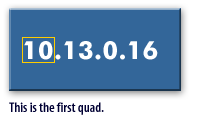
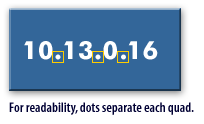
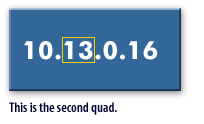
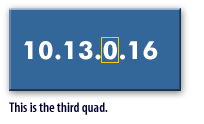
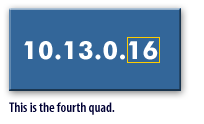
Parts of the IPv4 Address
What are the parts of the IPv4 Address?
An IPv4 address is a 32-bit numeric address used to identify devices on a network. It is typically written in a dotted-decimal format, consisting of four parts (octets) separated by periods. Each octet is an 8-bit number, ranging from 0 to 255. Here are the components:
-
Four Octets:
- An IPv4 address is divided into four sections, e.g., 192.168.1.1.
- Each octet represents 8 bits of the 32-bit address, and its value can range from 0 to 255 (2⁸ = 256 possible values).
-
Network Portion:
- This part identifies the specific network a device belongs to.
- The size of the network portion depends on the subnet mask (e.g., /24 or 255.255.255.0), which determines how many bits are reserved for the network.
- In 192.168.1.1 with a /24 subnet mask, 192.168.1 is the network portion.
-
Host Portion:
- This part identifies a specific device (host) within the network.
- Using the same example (192.168.1.1 with /24), the .1 is the host portion.
- The number of bits for the host depends on the subnet mask (e.g., 8 bits in a /24, allowing 256 hosts, though 2 are reserved: network and broadcast).
-
Binary Representation (Underlying Structure):
- Each octet is an 8-bit binary number. For example, 192.168.1.1 in binary is: 11000000.10101000.00000001.00000001.
- The 32 bits are split between network and host portions based on the subnet.
Logical parts
Every IP address has two logical parts: the network part and the local part. The Network Information Center (NIC) assigns the network part to individual networks, and administrators within each network assign the local part.
In both cases, the assigned number must be unique on the represented network.
The next lesson relates the TCP and UDP protocols to IP.
- IP Address Classes
Different sized networks have different requirements for IP addresses. A network with many hosts uses most of the 32-bit IP address for the local part, while a network with a few hosts uses only some of the bits to identify hosts.
To accommodate differing usage, IP designers broke IP addresses into three address classes: Class A, Class B, and Class C.
Each class divides the quads into network and local parts. More space is allocated for the network part as you move from Class A to Class C. For example, Class A networks use the first quad (8 bits) for the network part, and the remaining three quads (24 bits) for the local part.
| Class | Quad 1 | Quad 2 | Quad 3 | Quad 4 |
|---|---|---|---|---|
| A | Network | Local | Local | Local |
| B | Network | Network | Local | Local |
| C | Network | Network | Network | Local |
The next lesson relates the TCP and UDP protocols to IP.
IP Addresses - Quiz
Before moving on to the next lesson, click the Quiz link below to check your understanding of IP addresses.
IP Addresses - Quiz
IP Addresses - Quiz